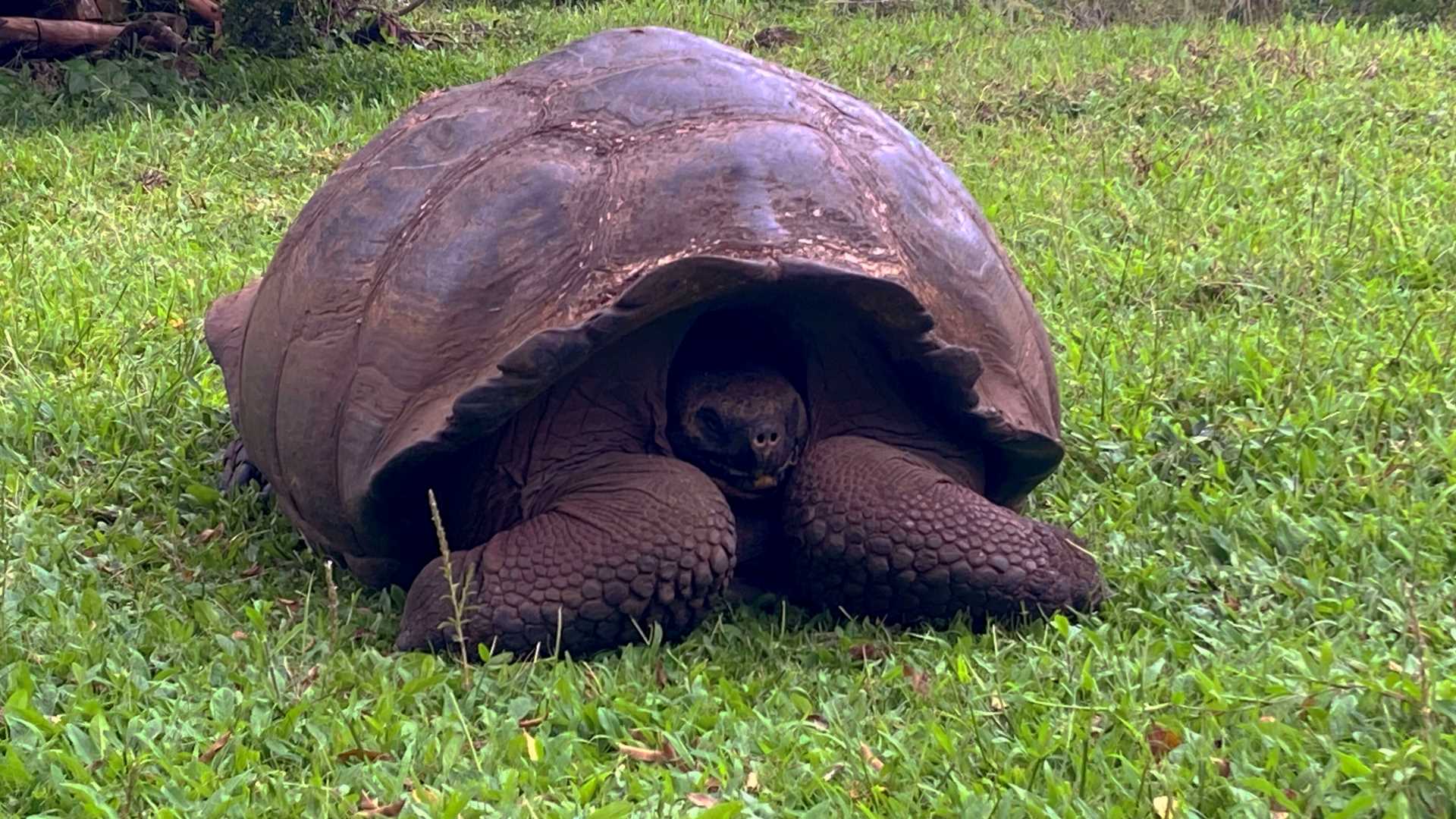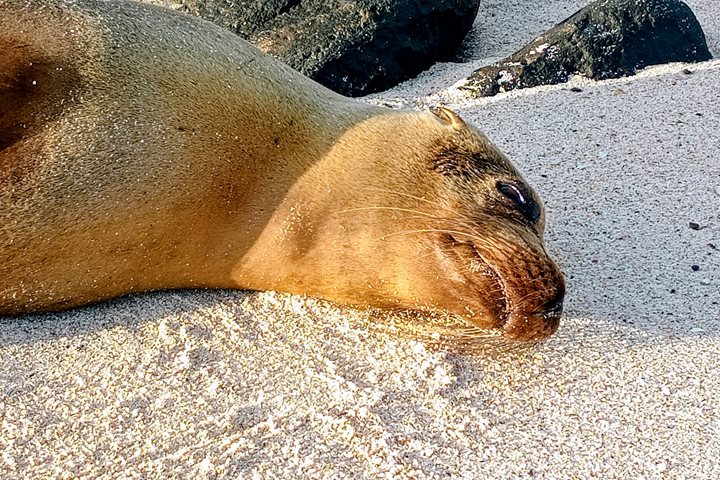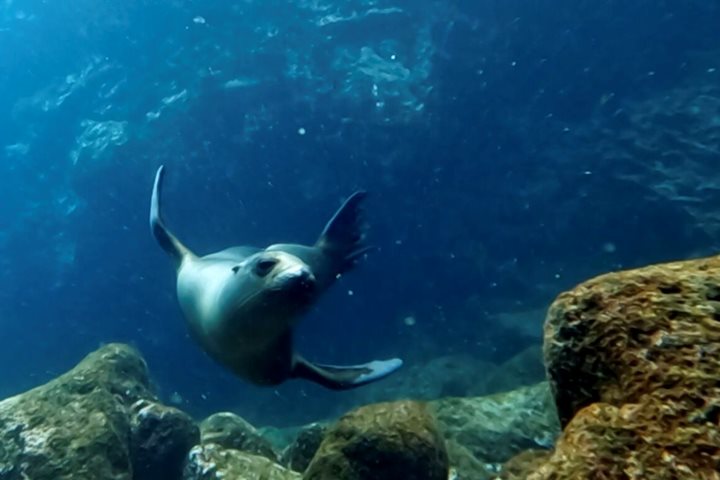Also known as Indefatigable Island, Santa Cruz is the second largest island in the archipelago and the best place to observe giant tortoises in their natural habitat. With highlands covered in green vegetation and its spring weather conditions, Santa Cruz shows us a different face of the Galapagos.
After breakfast, we headed to the main dock of Puerto Ayora. The largest town in the archipelago is home to the National Park and Charles Darwin Research Station headquarters. As soon as we arrived, we boarded buses and headed to the highlands to visit El Trapiche. Mr. Adriano Cabrera showed us around one of the oldest farms of the islands. He demonstrated the processes used to obtain sugar and alcohol (moonshine) from sugarcane juice. His family has used these same processes for more than 40 years. In addition to sugarcane, the plantation produces coffee, avocados, papayas, pears, and bananas. Our visit was like a trip back in time, and guests enjoyed incredible moments in this rustic and unique place.
Afterwards, we headed to “Los Gemelos.” Commonly called “The Twins,” this pair of pit craters is located at the center of Santa Cruz Island. The collapse of a magma chamber formed both craters a long time ago. The giant holes are estimated to measure a few hundred feet deep. Sheer cliffs surround the dense vegetation below. We walked along the craters, which are covered by a forest of Scalesia pedunculata, an endemic tree found in the highlands of the island. We spotted some finches, mockingbirds, and Galapagos flycatchers.
After visiting the pit craters, we headed to El Manzanillo Ranch to enjoy a delicious lunch. Afterwards, we visited the emblematic giant tortoises in their natural habitat. We found them everywhere…along the road, climbing hills, resting in muddy puddles, and feeding on grass. We observed males and females of different ages and sizes as they roamed freely and indifferently alongside us. Midafternoon, we headed back to Puerto Ayora to visit giant tortoises at the Galapagos National Park’s breeding center. We observed local efforts to protect and maintain the lineage of this emblematic and unique species. We visited the smallest tortoises that left the incubators a few months ago. At the corrals for females and males, we appreciated the differences in size and the shapes of their carapaces.
It was late in the day, and the temperature began to decrease a little. In the air, sea and land birds flew back to their nests, telling us that the day was over. We left with great memories of this beautiful island.







